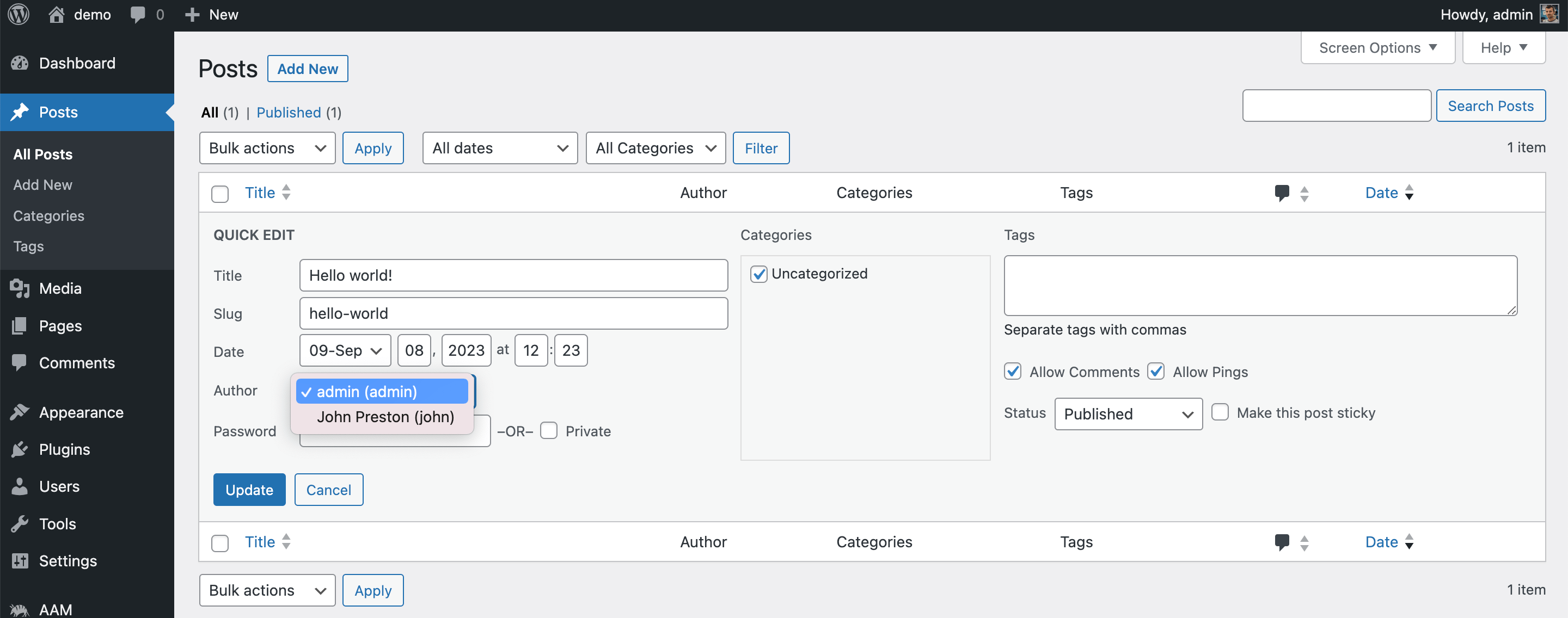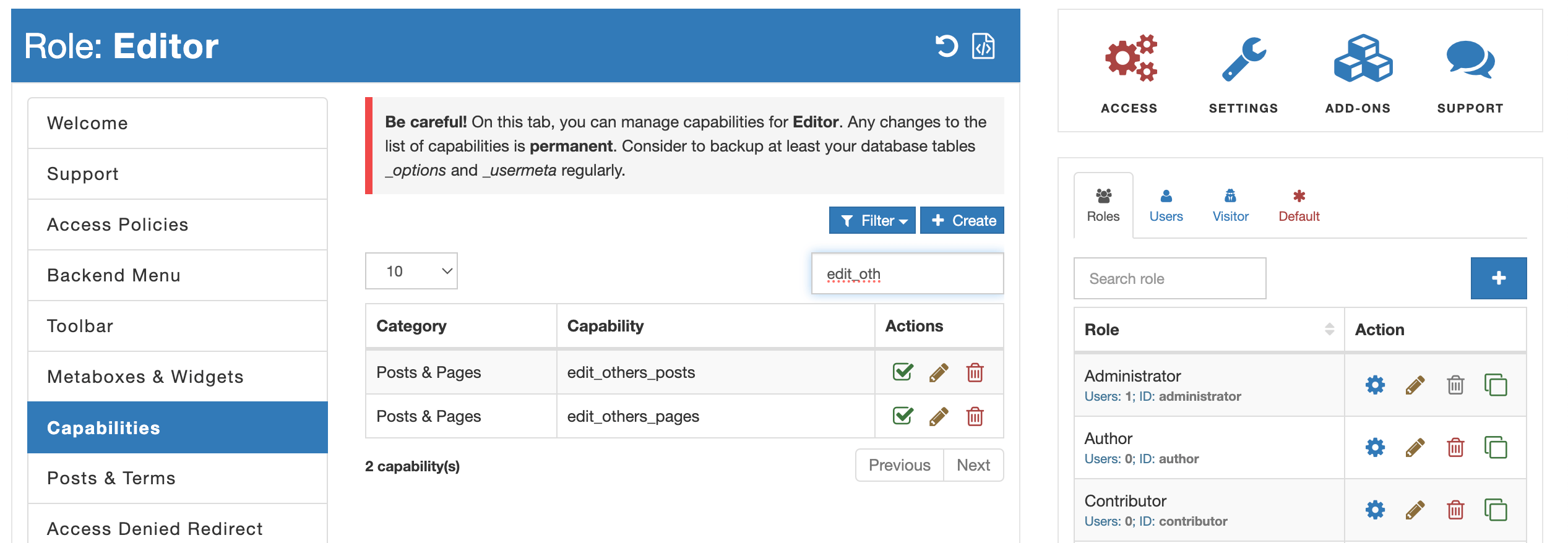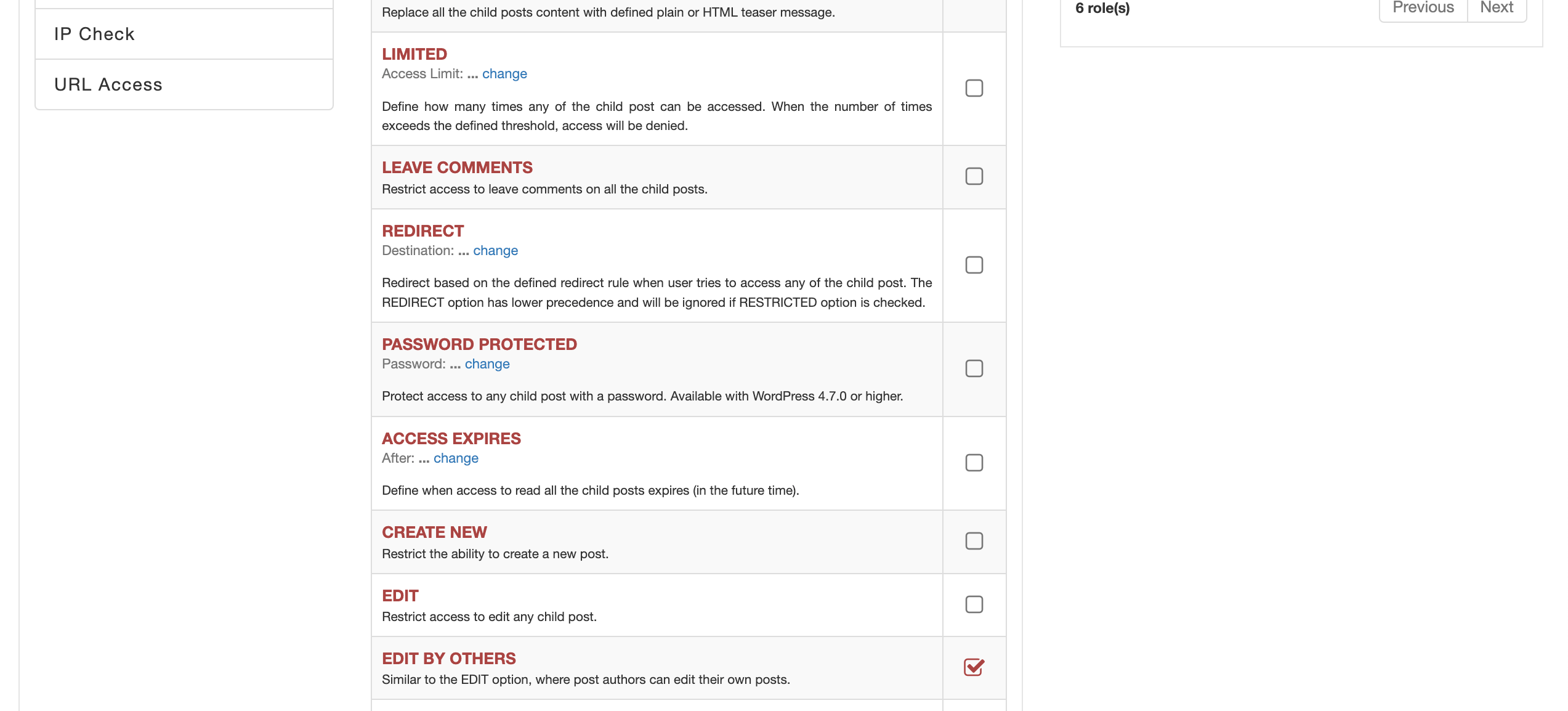How to allow WordPress users editing only their own page?
Here's a step-by-step guide on how to allow your users to manage only their own page in three different ways, depending on your specific access strategy.
FYI!
In this guide we refer to the "Author" attribute few times and it is essentially a WordPress post attribute shown on this screenshot.

WordPress native way
If you want to use the WordPress native method to grant users the ability to manage only their own posts and pages, follow these steps:
- Go to the AAM page and switch to the role that you need to customize using the "Users & Roles" widget.
- Navigate to the "Capabilities" tab and search for the capability by typing "edit_others".
- Uncheck the
edit_others_postsand/oredit_others_pagesoptions to prevent users from managing content they are not assigned as an author. - Ensure that the posts or pages you want to grant editing rights to have the correct "Author" selected.

Use the "EDIT BY OTHERS" option (Premium)
If you have the premium version and want to utilize the "EDIT BY OTHERS" feature as the default access control for a post type, follow these steps:
- Go to the AAM page and switch to the role that you need to customize using the "Users & Roles" widget.
- Navigate to the "Posts & Terms" tab and identify the post type for which you want to define restrictions (pay attention to the post type "Slug" as custom post types may have similar names).
- Select the "Manage Access" blue gear icon and check the "EDIT BY OTHERS" option on the displayed form.
- Ensure that posts or pages you want to grant editing rights to have the proper "Author" selected.

Allow editing without changing author attribute (Premium)
If you want to delegate content management to a specific user without altering the "Author" attribute, follow these steps:
- Go to the AAM page and switch to the role that your desired user is assigned to using the "Users & Roles" widget.
- Navigate to the "Posts & Terms" tab and find the post type for which you want to define restrictions (pay attention to the post type "Slug" as custom post types may have similar names).
- Select the "Manage Access" blue gear icon and check the "EDIT" option on the displayed form.
- In the "Users & Roles" widget, go to the "Users" tab and locate your desired user. Select the "Manage User" blue gear icon.
- In the "Posts & Terms" tab, select "Drill-Down" to the post type for which you set the default access.
- Find the specific post you want to delegate access to and select the "Manage Access" blue gear icon.
- On the displayed form, unselect the "EDIT" option to grant access without changing the "Author" attribute.